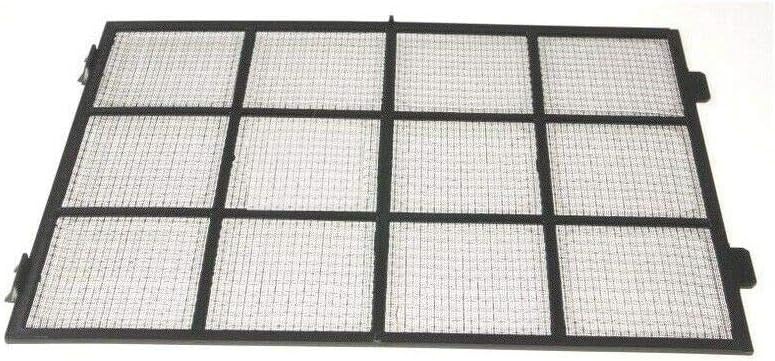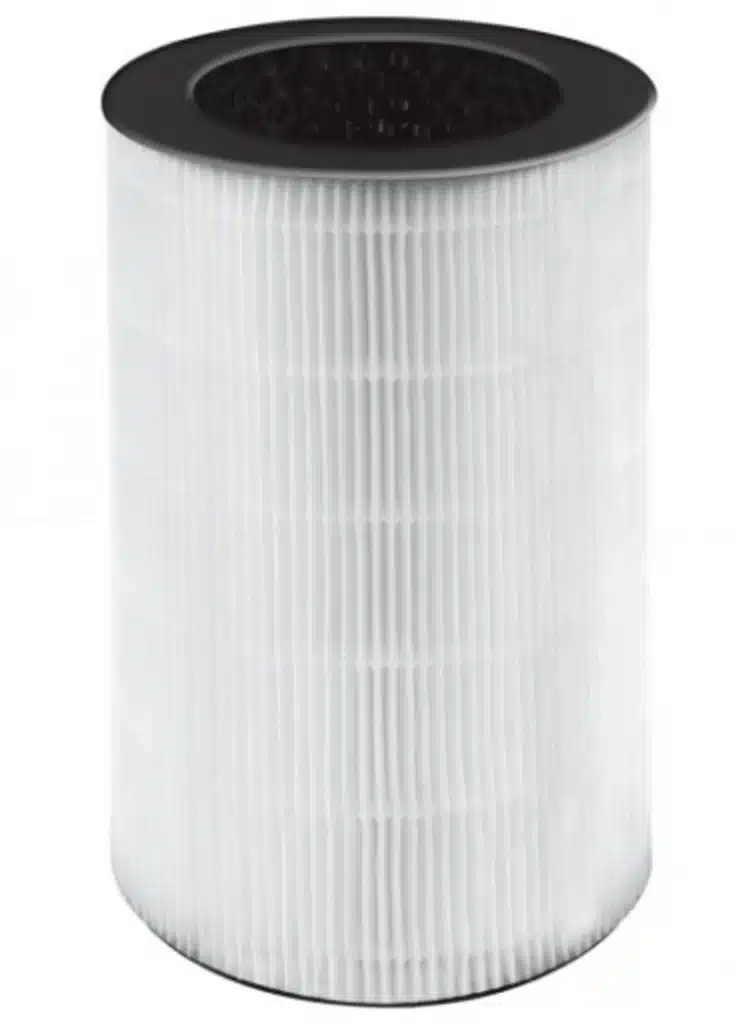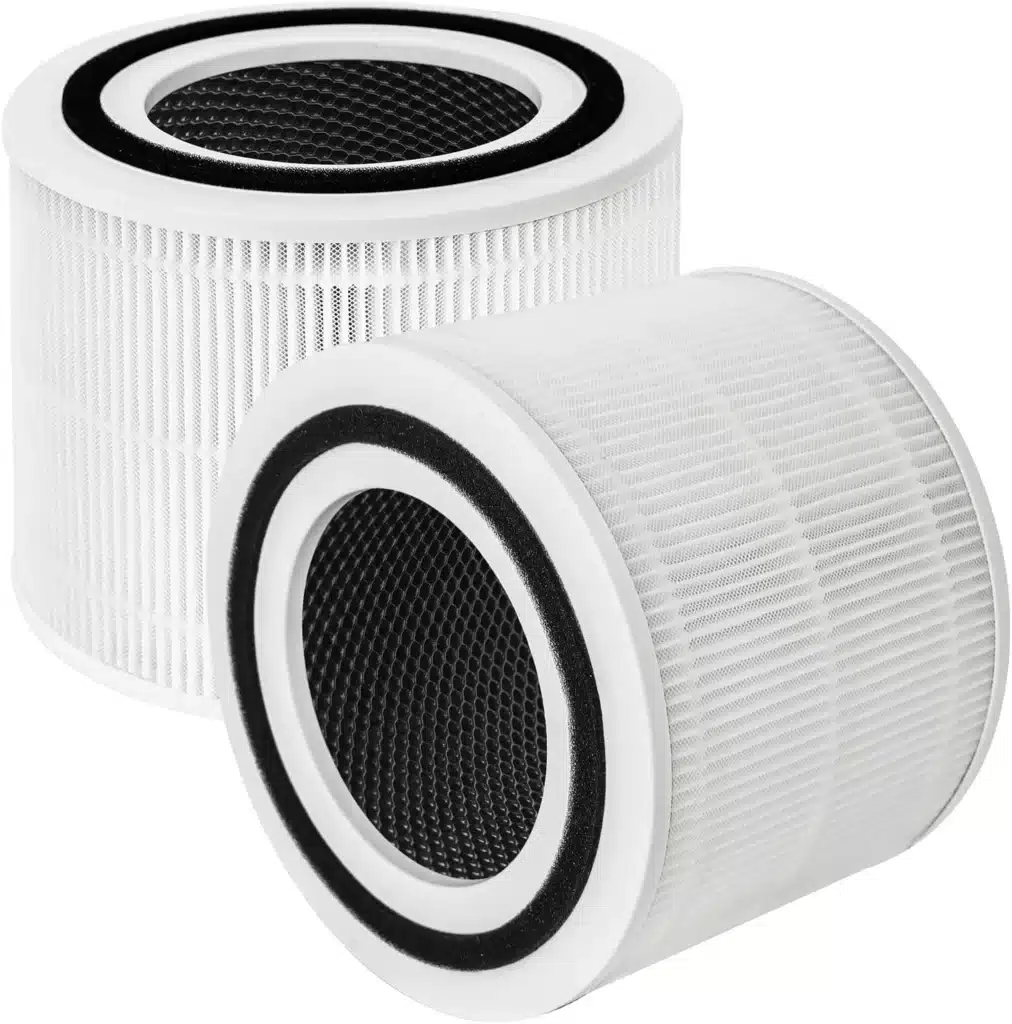Many people often wonder about the real purpose of pre-filters in air purifiers. This is why I’ve decided to pen down an article about these initial filters. They are the first step of filtration in most air purifiers available today. While each brand has its own unique pre-filter, they generally don’t filter much. Their main role is to help protect the HEPA filters from getting dirty too quickly, thus prolonging the HEPA filters’ lifespan.
What is pre-filter

The pre-filter in an air purifier is like the first line of defense in a sports game. It’s a crucial component in nearly all air purifiers sold today. Its main job is to catch bigger particles such as pet fur, carpet fibers, and sizable dust particles. It’s like a goalkeeper catching the big soccer balls so that the other players, in this case, the primary filter (usually a HEPA filter), can focus on the smaller, trickier particles.
Think of it like a net at the entrance of a harbor, which catches big debris to protect the more delicate parts of the harbor. It’s incredibly handy because it extends the life of the HEPA filter, which is like the star player of the team.
The HEPA filter can indeed trap larger particles, too, but this would make it dirty faster and need more frequent replacements – like your star player getting tired too quickly. The pre-filter, on the other hand, is easier to clean and keep up, which means you’ll save money as you won’t need to replace the more expensive HEPA filter as often.
Sometimes, the pre-filter is attached to a HEPA and a carbon filter, like a 3-in-1 unit. Other times, it’s separate and requires its own cleaning process. Many pre-filters are washable, like a reusable grocery bag.
But remember, while the pre-filter is handy, it’s not as effective as a HEPA filter. Imagine the goalkeeper is good at catching big soccer balls but not as good when the balls get smaller. The typical pre-filter can catch between 20%-70% of particles, and is often rated between MERV 1-8. It’s good at catching particles between 3-10 microns, which is about the size of a single speck of dust or a grain of fine beach sand.
Types of Pre-Filter
Air purifier pre-filters come in various types, differing in their material structure and whether or not they can be washed. Let’s look at some of the most commonly found categories:

Washable Pre-filters
These are what I consider to be the most practical type of pre-filter. They’re easy to maintain and as efficient as other kinds. Plus, they hardly ever need to be replaced.
What Washable Pre-filters Are Like
Think of washable pre-filters like a reusable coffee filter. Depending on the specific kind, you can clean them in the washing machine, rinse them in the sink, or even vacuum them.
Some air purifiers have fabric-style washable pre-filters, similar to a cloth napkin. These can be tossed into the washing machine for easy cleaning. Other versions might look like a metal grid with tiny holes, more akin to a metal sieve. For these, you can either give them a good rinse in the sink or vacuum up the dust.
Carbon Pre-filters or Pre-filters with Carbon Coating
Carbon-Coated Pre-filters
This type of filter is a common sight in the market. Essentially, it’s an ordinary filter dressed up with a layer of carbon, giving it an additional function as a pre-filter. It is often positioned as the first line of defense, standing right before the HEPA filter, much like a bouncer at the entrance of a club.
Combo of Carbon Filter and Pre-filter
Whether the combination of a carbon filter with a pre-filter is a marketing strategy or a genuine attempt by manufacturers to enhance filtration, I can’t be certain. However, it’s clear that this type of pre-filter performs well in protecting the HEPA filter.
It’s important to note, though, that in my opinion, this pre-filter option is the least ideal. Much like a fragile piece of china, it gets damaged easily, especially after a few rounds of vacuuming. Plus, it’s not very durable and needs frequent replacements.
Unlike the washable pre-filters, this kind of pre-filter isn’t meant to be washed at all. Washing it would cause the carbon to lose its effectiveness, much like washing off the seasoning on a perfectly marinated piece of meat.
Nylon Fiber Pre-filter

Much like the carbon pre-filters, the Nylon Fiber pre-filter is a type that is usually attached to another filter, often the HEPA filter. Imagine a sticky note attached to a page in a book; the Nylon Fiber pre-filter is the sticky note, and the HEPA filter is the page.
This type of pre-filter is like a sieve with tiny holes, so it’s effective at trapping many particles and protecting the HEPA filter from getting filled up too quickly.
Maintenance of Nylon Fiber Pre-filters
What I appreciate about this type of filter is its simple maintenance. All you need to do is run a vacuum cleaner over it to remove the dust – as easy as vacuuming a rug. It’s not recommended to wash this pre-filter, especially because it’s often glued to a HEPA filter, like a decal stuck on a car.
You’ll often find this type of filter in air purifiers that utilize round 3-in-1 filters. It’s an integral part of the team, playing a key role in keeping the air clean.
How and When to Clean a Pre-filter?

You’re probably wondering when and how to clean a pre-filter in your air purifier. Usually, this information comes in the user manual with your device. But really, when to clean depends a lot on your particular situation and where you’re using your air purifier.
Think of it like this: If you have a lot of pets in a room where you’re using the air purifier, your pre-filter is going to get dirty more quickly. It’s like a doormat at a busy entrance—it needs to be cleaned more often. Manufacturers usually suggest you give it a clean every 2-4 weeks.
From my own experience, if you’re using a smaller air purifier, meant for rooms up to 200 square feet, you’ll probably need to clean the filters within those recommended 2-4 weeks. But, if you’re using a larger, more powerful air purifier that runs at high speed often, it’s like having a very busy doormat, and dust might pile up even faster. In that case, you might need to clean the pre-filter every two weeks.
Now, in rooms where there aren’t any pets or much traffic, like a bedroom, the pre-filter doesn’t get dirty as quickly. It’s like a doormat at a rarely used entrance. So, in these situations, you could go as long as two months before needing to clean the pre-filter.
Taking care of the pre-filter in your air purifier doesn’t usually cost much, often nothing at all. It’s more about taking a bit of time to vacuum it or clean it in other ways. Just like taking care of a doormat—it needs a little of your time, but it’s not expensive.
FAQs
1. What does a pre-filter do in an air purifier?
A pre-filter acts like a first line of defense in an air purifier, catching large particles such as dust and pet fur. Its main job is to protect the HEPA filter, making it last longer.
2. Can all pre-filters be washed?
No, definitely not. Pre-filters that are paired with a carbon or HEPA filter should not be washed.
3. How long does a pre-filter usually last?
If a pre-filter is connected with a carbon or HEPA filter, it will need to be replaced along with those filters. However, washable pre-filters seldom need replacing, unless they’re noticeably damaged.
4. Is having a pre-filter important?
In my view, yes, especially if you have pets. But even without pets, a pre-filter can significantly extend the lifespan of your HEPA filter.
5. How frequently should I clean the pre-filter?
Typically, you should clean your pre-filter every 2-4 weeks, ideally once a month. If your pre-filter seems to get dirty fast, you might need to clean it more often. If it doesn’t collect much dust, less frequent cleaning could be fine.
Additional FAQs
6. Can a damaged pre-filter affect the efficiency of an air purifier?
Yes, a damaged or overly dirty pre-filter can impact the performance of the air purifier by hindering airflow and reducing the effectiveness of the HEPA filter.
7. How can I tell when it’s time to replace my pre-filter?
Signs that a pre-filter needs replacing include visible damage, a persistent dirty appearance even after cleaning, or if your air purifier’s performance seems to be deteriorating.
8. Does a pre-filter help with odors?
While a pre-filter mainly captures large particles, some pre-filters are combined with activated carbon, which can help reduce odors.
9. Do all air purifiers have pre-filters?
Most air purifiers do have pre-filters, but not all. It’s always best to check the product specifications or consult the user manual.
10. Can a washable pre-filter be vacuumed?
Yes, many washable pre-filters can be effectively cleaned using a vacuum cleaner. Always follow the manufacturer’s guidelines for maintenance.